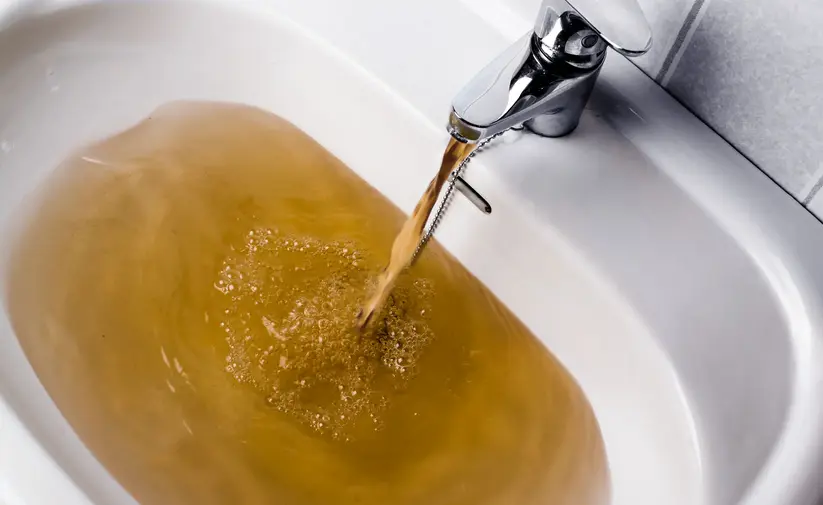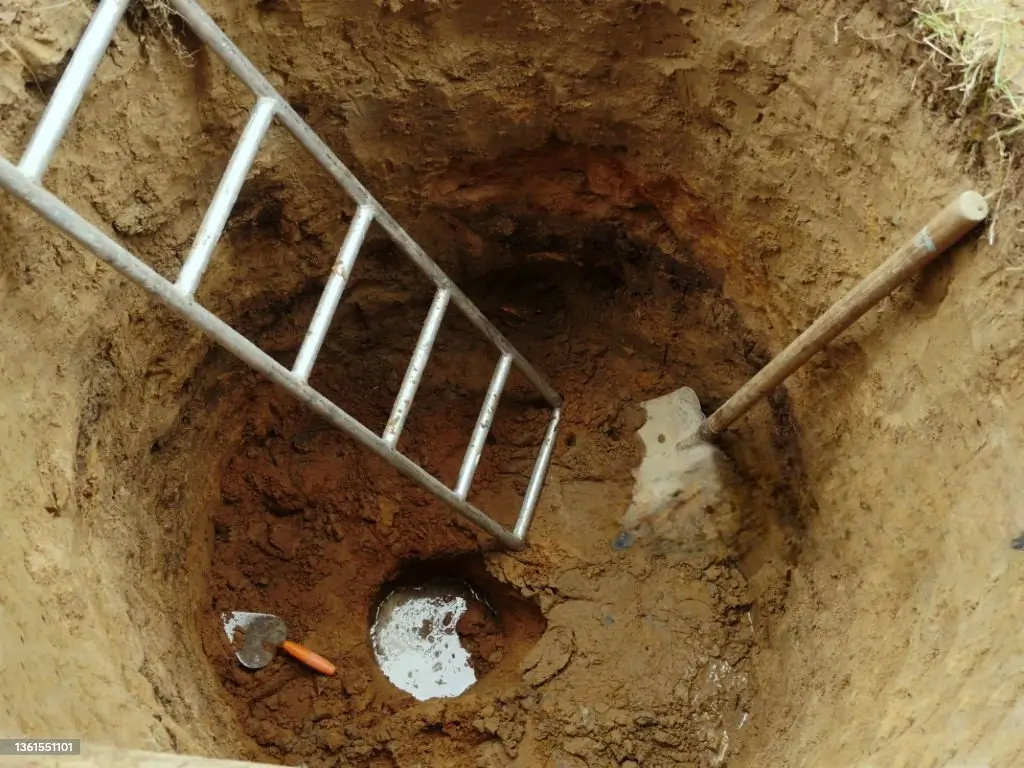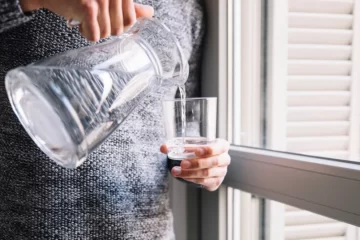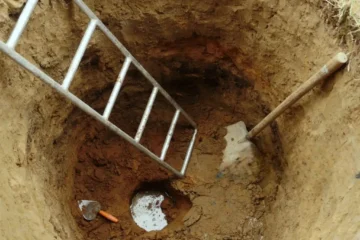Many people like having well water in their yard because it is handy. However, sometimes, the water can turn brown, which is not good. This can happen because of different things like rust in the water heater, rainwater getting into the well, or a broken pump.
It is important to figure out why the water is brown, but it is smart to get help from an expert to check everything properly.
In this article, we will explore the answer to our question and find a perfect solution for brown well water.
Is Brown Well Water Harmful?
If your water looks brown because of sediment, rust, or minerals, it is usually safe to drink, although it might smell bad. It is smart to filter the water until you figure out why it is brown. Brown water can look and smell weird, and it might taste strange too.
Even though brown water that smells or tastes odd might not be harmful, it is not wise to assume it’s okay to drink, especially if it happens suddenly.
In addition, brown water can ruin clothes when you wash them and stain plumbing fixtures if you do not fix it. Therefore, it is a good idea to get help from experienced professionals, to find out what is causing the problem.
Why My New Well Water Brown? (Some Common Causes)
Here are some frequent causes of brown discoloration in your well water:
1. Rusty Pipes
Brown water might be because of dusty pipes in your house. Stuff from inside the pipes can change the water’s color. It’s usually not dangerous, but you might need filters or softeners to fix it, depending on what’s causing it.
If your tap water looks brown, there could be a problem with your pipes, affecting your water quality. It’s a good idea to test your water to find out exactly why it’s discolored before doing anything else.
2. Your Well Water Heater Is Rusty
Sometimes, brown well water at home happens because of rust in your hot water heater. Even though newer heaters are made to resist rust, they usually have a part called an air anode rod that rusts first to protect the heater.
When this rod rusts, your water might turn brown. If only your hot water is brown, your heater is probably the reason. Fixing it might mean getting a new heater or just changing the rusty rod.
3. Iron Bacteria in Well Water
Brown well water might happen because of iron deposits. These deposits can hold bacteria in your pipes, making the water turn colors when it gets to your house. You might see stains in your toilet bowl that are red, orange, brown, or grey as an early sign of this problem.
To fix it, you might need to use cleaners to dissolve the deposits, kill the bacteria, and clean your plumbing.
If you think your complete plumbing system is contaminated, it’s best to ask a professional for help.
4. Surface Water Leaking Into Your Well
If your well is too close to the surface, it could make your water turn brown because surface water might seep in. Surface water isn’t filtered like groundwater does through layers of rock.
Therefore, if your shallow well water smells earthy or musty, it’s probably from surface water getting in. Getting help from an expert is a good idea to deal with this problem.
In addition, putting in a water filter can help keep your water clean from any bad stuff.
5. Tannins Can Turn Well Water Brown
Your well water might turn brown because of tannins in it. Tannins usually come from decayed stuff like leaves and peaty soil. When it rains, water goes through this decayed material, bringing tannins into your well.
So your well water might look brown and smell or taste weird because of tannins. They’re usually not bad for you, but they can make the water taste and smell bad. It’s a good idea to ask a professional for help to deal with tannins in your well water.
6. Silt and Sediment in Your Well Water Supply
Brown and cloudy well water might be because of silt or sediment buildup in your water supply. Usually, silt and sediment are in the ground where well water comes from, but they shouldn’t get into your water.
However, if the screen in your well gets broken or old, silt and sediment can get into your water, making it brown and cloudy. It’s important to change the broken screen quickly to stop more silt and sediment from getting in.
While silt and sediment themselves aren’t usually harmful, a broken screen might let in bad bacteria like E. coli, which is harmful.
7. Your Well Is Expired
If the well structure starts to break down, it could also make your water brown or cloudy. Wells has different parts, like the pump, that work together to give you water. If the pump gets damaged, it might suck in sediment, which can make your water look brown or cloudy.
If you think there’s a problem with your well, it’s important to get help from a professional to check it out. It’s a good idea to work with an expert to fix any issues.
While the well is being fixed, you might choose to drink bottled water until everything’s back to normal.
3. How to Clear Up Brown Well Water?
If your well water is brown, finding solutions depends on figuring out what’s causing it. Here are some main ways to fix the problem:

1. Replace Rusty Pipes
If rusty pipes are causing the problem, you need to replace them to get rid of the brown water. It’s not the well water that’s the problem, but the rust in your pipes makes the water brown once it’s in your house.
Flushing the pipes might help for a bit, but you’ll need to replace the pipes for a permanent fix.
2. Replace Your Well Water Heater
If your hot water heater is causing the problem, you’ll need to fix or replace it. If it’s the anode rod, a plumber can change it for you. But if you see the whole tank has turned brown when you check, it might be time for a new hot water heater, especially if your water heater is more than 10 years old.
Ask professionals to help you choose and put in a new one.
3. Fix Your Well Water Pump
If your water looks brown, it might be because the water pump connected to your well is loose. Get in touch with a professional to fix the pump and make sure it’s placed away from dirt in your yard.
Also, talk to them about how to stop this problem from happening again in the future.
4. Use a High-Quality Filter
Choosing a specific water filter system might be the best way to make sure your home’s drinking water is safe. Since modern filter systems can be complicated, it’s a good idea to have a professional check and maintain them regularly to keep your water clear and free of discoloration.
Conclusion
Having well water at home can be handy, but finding brown water can worry you. Lots of things like rusty pipes, a rusty water heater, iron bacteria, surface water getting in, tannins, silt, sediment buildup, or problems with the well structure can make your water brown.
It’s really important to figure out what’s causing the problem with the help of experts. This makes sure your water is safe to drink and stops your plumbing from being damaged.
Doing regular checks, fixing things on time, and using the right filters are all important steps to fix brown well water and keep your drinking water clean and safe for your family.
FAQs
Is brown well water safe to drink?
Generally, brown well water caused by sediment, rust, or minerals is safe to drink, although it may have an unpleasant odor or taste. However, it’s wise to filter the water until the cause of discoloration is determined.
How can I prevent my well water from turning brown?
Preventing brown well water involves regular maintenance of well components, including pipes, water heater, and pump. Ensuring proper filtration and addressing issues such as sediment buildup or structural damage promptly can help prevent discoloration.
What should I do if my well water is brown?
If you notice brown well water, it’s advisable to contact a professional to assess the situation. They can identify the cause and recommend appropriate solutions, such as pipe replacement, water heater maintenance, or installation of a filtration system.
Can rusty pipes be the cause of brown well water?
Yes, rusty pipes can contribute to brown well water. Rust particles from deteriorating pipes can discolor the water as it passes through them. Replacing rusty pipes is often necessary to resolve this issue and ensure clean water flow.
How do I know if my well water is contaminated with iron bacteria?
Signs of iron bacteria contamination in well water include red, orange, brown, or gray stains in plumbing fixtures, along with a musty odor. Professional testing and inspection can confirm the presence of iron bacteria and guide appropriate treatment measures.





